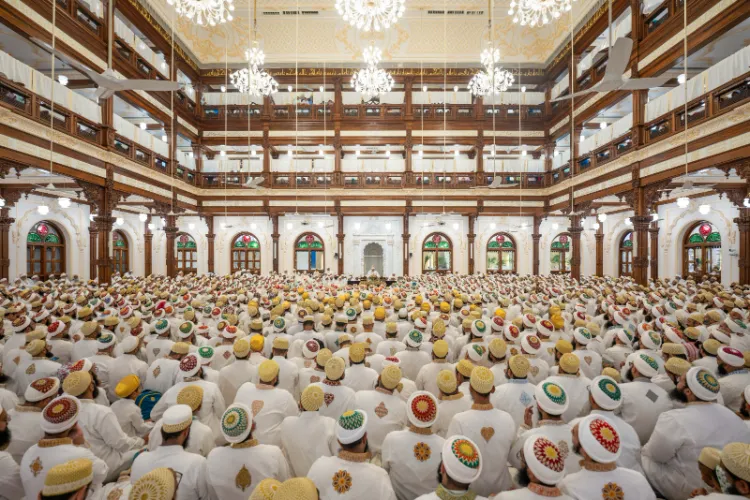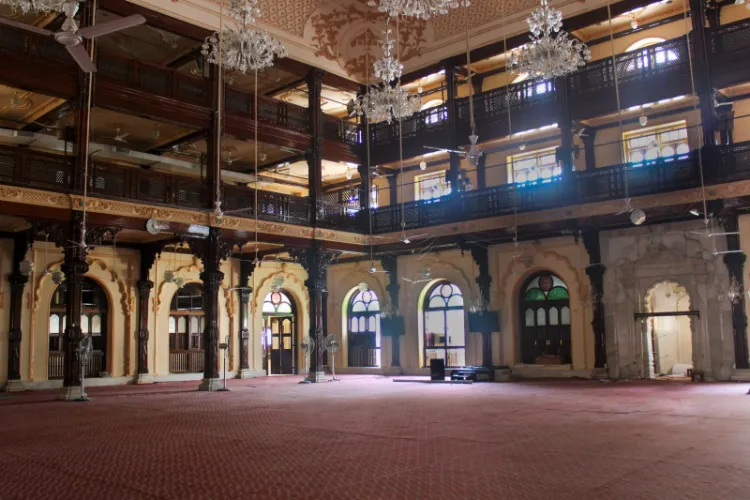
Mumbai
The Dawoodi Bohra community across the world witnessed a historic moment as His Holiness Syedna Mufaddal Saifuddin inaugurated the iconic Saifee Masjid in Bhendi Bazaar, Mumbai, on the auspicious occasion of Milad un-Nabi
The inauguration of Saifee Masjid is another significant milestone in India’s largest cluster redevelopment project underway in Bhendi Bazaar
The masjid was originally built by the present Syedna’s grandfather His Holiness Syedna Taher Saifuddin in 1926 and served as the community’s primary place of worship in Mumbai for over 100 years. The masjid was demolished and reconstructed exactly as it was, with the addition of certain necessary amenities, as part of the 16.5-acre redevelopment project undertaken by Saifee Burhani Upliftment Trust (SBUT).
.webp)
His Holiness Syedna Mufaddal Saifuddin
Deeply concerned by the dilapidated and dangerous state of the infrastructure in Bhendi Bazaar, the late Syedna Mohammed Burhanuddin initiated the SBUT project in 2009 with the aim of providing spacious accommodation with modern facilities to over 20,000 people. This path-breaking project is recognized by the government of India as the country’s largest urban renewal makeover for inner city redevelopment.
Speaking on the occasion, a spokesperson for the community said, “Saifee Masjid in Mumbai has been of great significance to the Dawoodi Bohras all these years. The numerous historical events and occasions we have witnessed here give the masjid a special place in our hearts and we are overjoyed to see itsinauguration.”
The masjid, the largest for the Dawoodi Bohras in India, has a unique place in their history. It is situated in what is today known as Bhendi Bazaar, a neighbourhood that has historical ties to the Dawoodi Bohra community and has been a centre for their residences and shops for over a century.
Architectural Features
Saifee Masjid boasts a unique fusion of various architectural styles; indigenous Indian, Islamic, and even elements of classical architecture blend together in a harmonious and distinctive design. The two minarets at each corner of the masjid stand out for their graceful ornamentation. Burmese teakwood from the original masjid, known for its durability and beauty, has been reinstalled in the masjid's doors, windows, columns and beams, as well as the decorative grills which allow for the play of light and shadow. The walls are adorned with Quranic verses, ornate floral motifs and decorative patterns.
The reconstructed masjid complex has been planned and designed to reduce its environmental impact as far as possible. The installation of a rainwater harvesting system along with a sewage treatment plant will reduce overall water consumption. The lights in the utility building opposite the masjid are powered entirely by solar panels and a decorative fountain and date palm trees provide natural shade in the courtyard between Saifee Masjid and Raudat Tahera, adding to the overall aesthetics and ambience of the complex. Over 150 shops surrounding the exterior of Saifee Masjid and Raudat Tahera complex have also been redeveloped as part of the upliftment project.

The old mosque
About SBUT
Saifee Burhani Upliftment Trust (SBUT) is a public charitable trust established to implement the Saifee Burhani Upliftment Project – a path-breaking project to transform one of India’s most decrepit and congested localities, Bhendi Bazaar, in Mumbai into a modern and thriving urban area. With the clear intention of holistic development, the project aspires to fulfill the dreams of 3,200 residents and 1,250 businesses, significantly enhancing their quality of life in all aspects.
In 2020, the first phase of the project was completed, rehabilitating 610 families and 128 businesses in two towers, named ‘Al Sa’adah’. The twin towers built on one acre plot area replaced 13 old and dilapidated buildings.
Currently, the construction work of two twin high-rise towers named ‘Al Ezz’ and ‘An Nasr’ is underway and phase-wise allotment of commercial and residential premises has also begun. The Trust plans to rehabilitate all residential and commercial tenants in the redevelopment area within the next few years.
